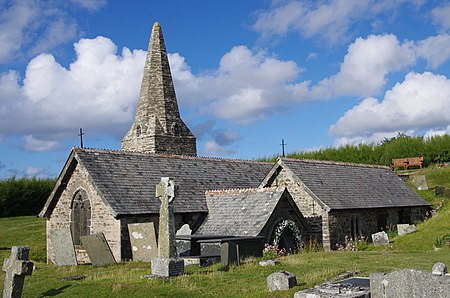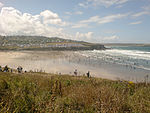The Doom Bar (previously known as Dunbar sands, Dune-bar, and similar names) is a sandbar at the mouth of the estuary of the River Camel, where it meets the Celtic Sea on the north coast of Cornwall, England. Like two other permanent sandbanks further up the estuary, the Doom Bar is composed mainly of marine sand that is continually being carried up from the seabed. More than 60 percent of the sand is derived from marine shells, making it an important source of agricultural lime, which has been collected for hundreds of years; an estimated 10 million tons of sand or more has been removed from the estuary since the early nineteenth century, mainly by dredging.
The estuary mouth, exposed to the Atlantic Ocean, is a highly dynamic environment, and the sands have been prone to dramatic shifts during storms. According to tradition, the Doom Bar formed in the reign of Henry VIII, damaging the prosperity of the port of Padstow a mile up the estuary.
Until the twentieth century, access to Padstow's harbour was via a narrow channel between the Doom Bar and the cliffs at Stepper Point, a difficult passage for sailing ships to navigate, especially in north-westerly gales when the cliffs would cut off the wind. Many ships were wrecked on the Doom Bar, despite the installation of mooring rings and capstans on the cliffs and quarrying away part of Stepper Point to improve the wind. In the early twentieth century the main channel moved away from the cliffs, and continued dredging has made it much safer for boats, but deaths have occurred on the bar as recently as May 2020.A Cornish folklore legend relates that a mermaid created the bar as a dying curse on the harbour after she was shot by a local man. The Doom Bar has been used in poetry to symbolise feelings of melancholy, and has given its name to the flagship ale from the local Sharp's Brewery.











